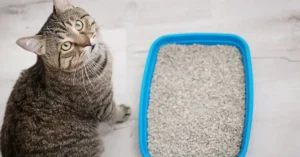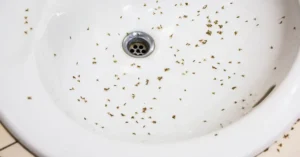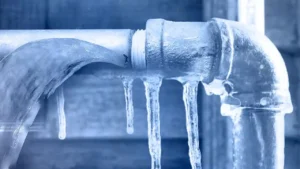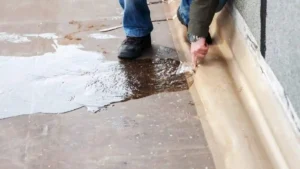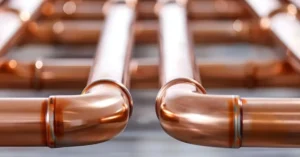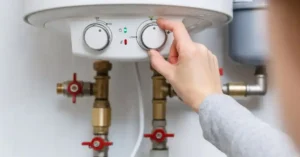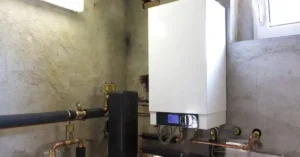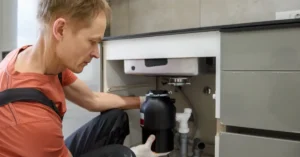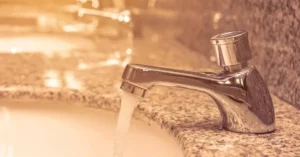A leaky or malfunctioning diverter is a common plumbing headache that reduces your shower’s water pressure and wastes water. Fortunately, you can often fix this problem yourself without calling a plumber, saving time and money. Here is a full, professional guide on how to repair bathtub faucet diverter issues with confidence.
The simple, concise answer is that you can repair a bathtub faucet diverter by turning off the water, removing the tub spout, inspecting the internal mechanism which is typically a lift-gate or gate valve and then either cleaning mineral buildup, replacing a worn-out rubber washer or O-ring, or installing an entirely new diverter assembly or tub spout.
Understanding the Bathtub Faucet Diverter System

Before starting any repair, it helps to know what you are working on. The bathtub faucet diverter is a crucial mechanism. It directs the water flow either down and out of the bathtub spout with diverter into the tub, or up to the showerhead.
There are three main types of bathtub diverters:
- Tub Spout Diverter: This is the most common type. It features a lift-up knob or gate on top of the spout. Pulling the knob activates an internal tub spout diverter valve (often a small rubber stopper or flapper) that blocks the spout opening, forcing water to the showerhead.
- Two-Valve Diverter: Less common for a tub/shower combination, but sometimes found on older fixtures. This setup uses a small handle or knob on the wall, often between the hot and cold handles, to switch the water flow. This system uses a tub faucet diverter valve cartridge.
- Three-Valve Diverter: Found in older setups, this system has three handles one for hot water, one for cold water, and a third handle specifically for the shower diverter. The third handle operates a brass diverter valve stem located in the wall.
Understanding your specific type of bath tub spout diverter determines the repair method you will use.
How to Repair Bathtub Faucet Diverter Handle (Two- or Three-Valve Systems)
If your system uses a dedicated bathtub diverter valve handle on the wall, the repair involves replacing the internal diverter valve cartridge or stem, which is a bit more complex.
- Shut Off Water: Turn off the main water supply.
- Access the Valve: Use a flathead screwdriver to gently pry off the decorative cap on the center of the diverter handle. Unscrew the handle screw and pull the handle off.
- Remove Trim Plate: Remove the screws holding the trim plate (escutcheon) to the wall and slide the plate off.
- Remove the Cartridge/Stem: You will see the valve stem or cartridge held in place by a retaining clip or a large brass nut. Use an adjustable wrench to unscrew the nut or pliers to remove the clip. Carefully pull the entire stem or cartridge out.
- Inspect and Replace: Inspect the O-rings and seats on the stem or cartridge for wear. If they look worn, replace them. For heavy corrosion or damage, purchase a matching replacement cartridge or stem from a hardware store.
- Reassemble: Lubricate new parts with silicone grease, insert the new or cleaned part, tighten the retaining nut/clip, and then reattach the trim plate and handle. Turn the water back on slowly and test.
Common Problems with a Bathtub Shower Diverter
If you notice a problem, you are likely dealing with one of these common issues:
- Weak Shower Flow: Water continues to drip or pour heavily from the tub spout even when the shower is on. The diverter is not fully blocking the water flow.
- Stuck or Stiff Diverter: The diverter knob or handle is hard to pull up or rotate. This often signals heavy mineral buildup.
- Leaking Faucet: Water leaks from around the diverter handle or the base of the spout. This often points to a worn washer or O-ring inside the tub faucet diverter.
- Noise: A strange noise, like a clicking or squeal, when the diverter is engaged. This can be a sign of a loose part or pressure issues.
Essential Tools and Materials
Having the right tools ready makes the job simple and fast.
- Adjustable wrench or channel lock pliers
- Flathead and Phillips screwdrivers (or Allen keys for set screws)
- White vinegar
- Old toothbrush or soft-bristle brush
- Plumber’s silicone grease (must be silicone, not petroleum-based)
- Plumber’s tape (Teflon tape)
- Replacement rubber washer, O-rings, or a new bath tub diverter spout/cartridge.
- Rag or towel to protect the tub drain.
Step-by-Step Guide: How to Repair Bathtub Spout Diverter
This section focuses on the most common type: the lift-up knob bathtub spout with diverter.
Step 1: Turn Off the Water Supply
Safety first. Locate the main water shut-off valve for your house, or ideally, the shut-off valves for the specific tub/shower if accessible. Turn them clockwise until the water is completely off. Turn on the tub faucet diverter briefly to drain any remaining water from the pipe.
Step 2: Remove the Bathtub Spout
The way you remove the spout depends on its installation method.
- Set Screw Spout (Most Common): Look on the underside or at the back of the spout, near the wall. You will see a small hole containing a set screw (either an Allen screw or a Phillips screw). Use the appropriate tool to loosen this screw. Once loose, the spout should slide straight off the copper pipe protruding from the wall.
- Threaded Spout: If you do not see a set screw, the spout is likely screwed onto a threaded pipe. Use an adjustable wrench to firmly grip the spout, then turn it counterclockwise. It may take some effort. Be careful not to damage the pipe coming from the wall.
Once the spout is off, look at the end of the pipe coming out of the wall. Cover the drain with a towel to prevent dropping small parts.
Step 3: Inspect and Disassemble the Diverter Mechanism
The bathtub diverter valve mechanism will be inside the spout itself.
- Remove the Pin/Knob: Pull the diverter knob or pin all the way up. It may slide right out. If it is attached with a screw, remove that screw first.
- Inspect the Valve: Inside the spout, you will see the tub spout diverter assembly. This usually has a stem and a small rubber flapper or lift-gate valve. This is the part that fails.
- Check for Damage: Look closely at the rubber flapper or washer. If it is cracked, worn, or stiff, it needs to be replaced. This worn rubber is the primary reason why water keeps flowing into the tub while the shower is running.
Step 4: Repair or Clean the Diverter
How you proceed depends on what you find:
- Mineral Buildup (Stiff Diverter/Weak Flow): If the parts look okay but are covered in white, crusty deposits (hard water mineral buildup), cleaning is the answer. Soak the spout and the diverter components in white vinegar for several hours, or even overnight. Scrub the parts clean with an old toothbrush. Use a small file or flathead screwdriver to gently scrape any grime from the inside channel of the spout where the diverter sits.
- Worn Washer/Flapper (Leaking/Weak Flow): If the rubber is cracked, remove the old washer/flapper using pliers. Take this part to a plumbing supply store or hardware store to buy an exact replacement. Before reassembling, lightly coat the new rubber washer and the diverter stem with plumber’s silicone grease. This lubrication is key to ensuring smooth operation and a long lifespan.
If the entire diverter assembly is broken or corroded beyond simple cleaning or replacing a washer, you may need to buy a whole new bathtub spout with diverter. Bring the old spout to the store to ensure a perfect match.
Step 5: Reassemble and Test
- Reinstall the cleaned or new diverter mechanism into the spout.
- If it is a threaded spout, remove the old plumber’s tape from the pipe threads and wrap three to four layers of new plumber’s tape clockwise around the pipe coming out of the wall.
- Screw the spout back on by hand, or slide it on and tighten the set screw. The spout should be snug and point straight down. Do not overtighten.
- Turn the main water supply back on slowly.
- Test the faucet and the tub spout diverter. Run the water into the tub, then pull up the diverter knob. Water flow to the tub should stop, and water should now flow strongly out of the showerhead. Check for leaks around the spout.
You can read about: How Do I Repair a Leaky Bathtub Faucet
Conclusion
Repairing a bathtub shower diverter can be a satisfying DIY project that fixes annoying low water flow and restores your shower’s performance. By identifying the issue such as mineral buildup, worn washers, or a damaged stem and using simple plumbing techniques, you can resolve the problem efficiently. If the repair feels too complicated, the skilled team at Derks Plumbing is always here to help. For dependable and fast plumbing assistance, explore our professional Faucet Repair Services in Eagle Rock. Regular maintenance and timely repairs not only save you money but also prevent future plumbing troubles.
FAQs
Q1: Why is water still coming out of the tub spout when the shower is on?
This is the most common sign of a faulty bathtub diverter valve. The internal rubber washer, flapper, or gate that is supposed to seal the tub spout opening is likely worn out, stiff from mineral buildup, or damaged. It needs to be cleaned or replaced to create a watertight seal.
Q2: Can I use WD-40 or petroleum jelly to lubricate the diverter parts?
No, you should only use plumber’s silicone grease. Petroleum-based products like WD-40 or petroleum jelly will degrade and damage rubber washers and O-rings, causing them to swell and fail much faster. Silicone grease is safe for plumbing rubber.
Q3: How do I know if I need to replace the entire tub spout?
You should replace the entire bathtub spout with diverter if the body is cracked, heavily corroded, or if the internal diverter assembly cannot be easily disassembled for cleaning or for replacing the rubber washer. If the spout is cheap and a replacement is easy to find, replacing the whole thing is often simpler than trying to fix a complex internal part.
Q4: What is the average lifespan of a tub faucet diverter valve?
The rubber parts (washers and seals) typically last between 4 to 7 years, especially in areas with hard water, which accelerates mineral buildup and wear. The solid brass or plastic components of the diverter valve itself can last for decades.
Q5: Is a three-valve diverter harder to fix than a tub spout diverter?
Yes, a three-valve system is generally more involved because the tub faucet diverter valve (a stem and seat assembly) is located inside the wall behind the faucet handles. Accessing and replacing the stem requires removing the handle and trim plate, which adds steps compared to simply replacing a spout.


